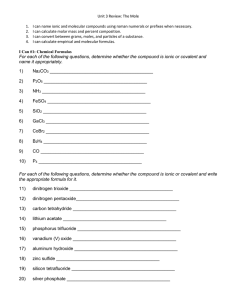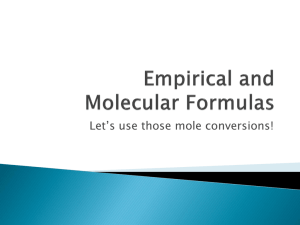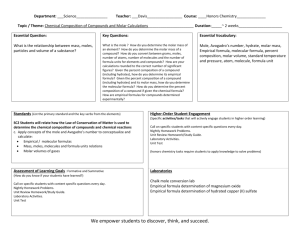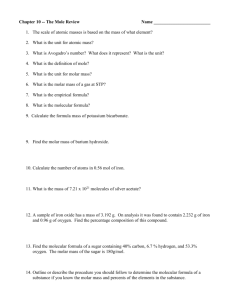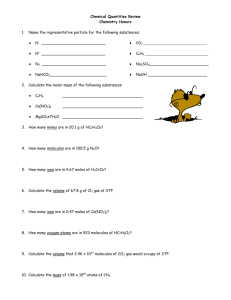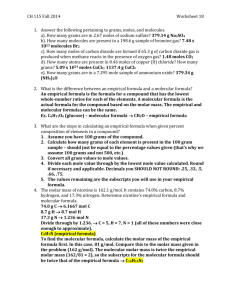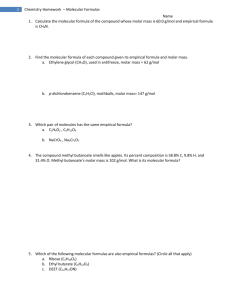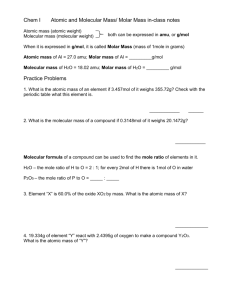Molar Mass
advertisement
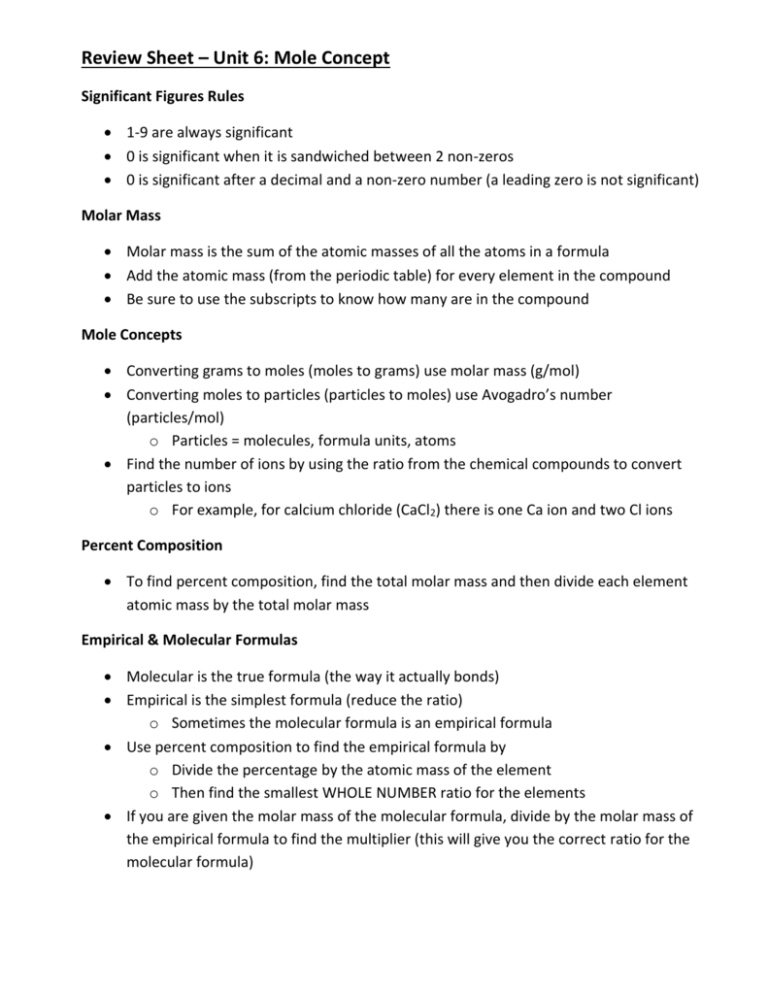
Review Sheet – Unit 6: Mole Concept Significant Figures Rules 1-9 are always significant 0 is significant when it is sandwiched between 2 non-zeros 0 is significant after a decimal and a non-zero number (a leading zero is not significant) Molar Mass Molar mass is the sum of the atomic masses of all the atoms in a formula Add the atomic mass (from the periodic table) for every element in the compound Be sure to use the subscripts to know how many are in the compound Mole Concepts Converting grams to moles (moles to grams) use molar mass (g/mol) Converting moles to particles (particles to moles) use Avogadro’s number (particles/mol) o Particles = molecules, formula units, atoms Find the number of ions by using the ratio from the chemical compounds to convert particles to ions o For example, for calcium chloride (CaCl2) there is one Ca ion and two Cl ions Percent Composition To find percent composition, find the total molar mass and then divide each element atomic mass by the total molar mass Empirical & Molecular Formulas Molecular is the true formula (the way it actually bonds) Empirical is the simplest formula (reduce the ratio) o Sometimes the molecular formula is an empirical formula Use percent composition to find the empirical formula by o Divide the percentage by the atomic mass of the element o Then find the smallest WHOLE NUMBER ratio for the elements If you are given the molar mass of the molecular formula, divide by the molar mass of the empirical formula to find the multiplier (this will give you the correct ratio for the molecular formula)

